Discover the whimsical and fascinating universe of Clayton Bailey, a pioneering artist whose work blurs the line between art and engineering. Known for his playful approach to sculpture and kinetic art, Bailey’s creations invite viewers into a world where creativity meets whimsy and science fiction springs to life.
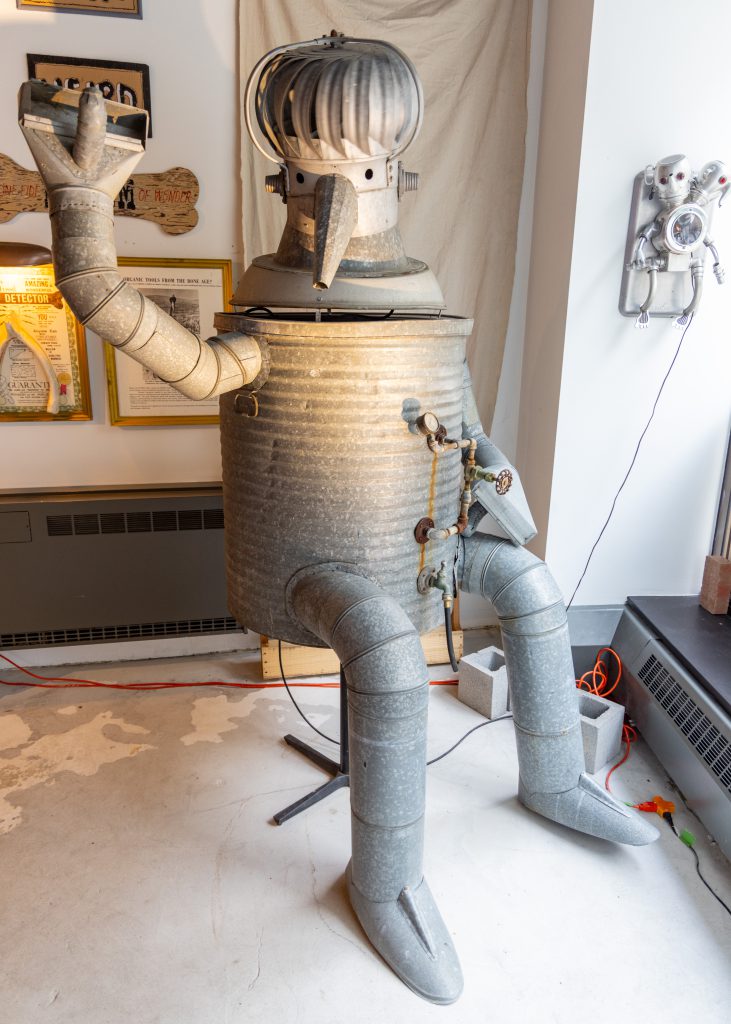
Behind the Scenes
Creation Process: Each of Clayton Bailey’s robots starts as a concept drawn from his deep imagination, influenced by a love for science fiction and comic books. Utilizing materials ranging from scrap metal to ceramic parts, Bailey meticulously assembles each piece, ensuring it not only looks unique but also functions in an entertaining way.
Experience the Magic
Exhibition Information: Visit the World of Wonders Museum at 225 S Main St, Akron, OH 44308. Explore the interactive displays, live demonstrations, and even meet some of Bailey’s newest robotic creations in person. For ticket information and visiting hours, click here.
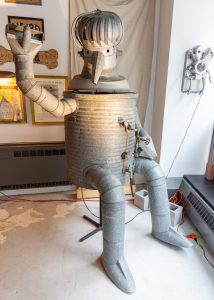
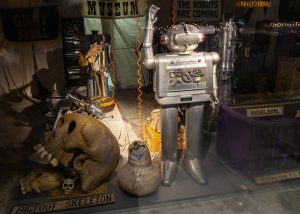

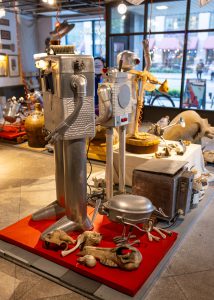
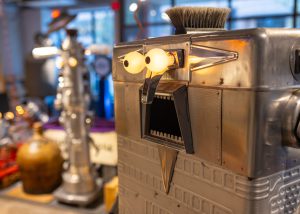
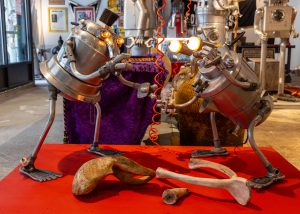
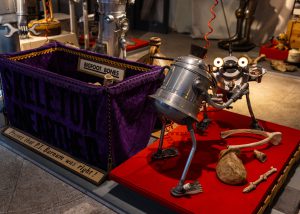
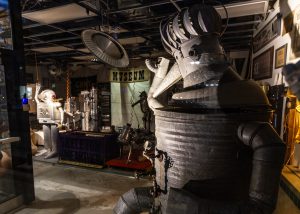
To many, Clayton Bailey’s Robots are his most iconic creations. Bailey combed the flea markets and junkyards of Northern California for the shiniest cast-off chrome appliances and restaurant ware, then seamlessly combined them into sculptures that hold a mirror up to the excesses and foibles of contemporary society. Many of his sculptures are helpers—in tune with the robots that populate fantasy and science fiction literature from L. Frank Baum to Isaac Asimov.
Bailey’s robotic creations all descend from On/Off, a robot that he created to serve as a carnival barker to drum up traffic for his Wonders of the World Museum, which opened in Port Costa in 1976. Cleverly tucked inside the robot was Bailey’s son Kurt, who commanded passersby to enter the museum in his best robot voice. Sometimes On/Off chased people down the street. When a coin was inserted in On/Off’s slot, a souvenir postcard was issued from a slot in his chest. On/Off proved to be so popular that Bailey introduced a legion of his robots to the public via a 1981 exhibition at the Triton Museum of Art.
Clayton Bailey’s robots could be massive—Tinman Robot (19xx), whose body is made from cast-off grain silo parts, measures xx while seated. Smaller robots could also prove helpful. With protruding eyes, a lolling tongue, and a transparent acrylic belly, Pay Here (19xx) welcomed visitors to Bailey’s museum while inviting them to make a donation. Small robots could also have big personalities. A pair of Wrestlebots (19xx) with light-up eyes eternally stare into each other’s eyes, squaring off for an epic wrestling match.
With his focus on the excesses of American popular culture, it is unsurprising that a fair number of Bailey’s robots make reference to female actresses and pin-up models. An early robot, dubbed Sweetheart sported a chrome coffee pot head and a spout on her torso that dispensed hot coffee. In 1983, Sweetheart was unceremoniously ousted from a Science exhibit at the University of California-Berkeley after several visitors complained about the robot’s outsized breasts, which were made from the bumper bullets of a 1952 Cadillac.
A close relative, Genabridgebot (19xx), is fashioned after Italian siren Gina Lollobrigida. Marilyn Monrobot (1985) is seated with demurely crossed legs, counterbalanced by oversized breasts made from restaurant warming lamps and a pair of stainless-steel mixing bowls that make up her backside. Bailey’s male robots could be as awkward as his female robots were comely. Fresnel Robot (19xx), who takes his name from a prismatic Fresnel lens in his chest, stares tentatively outward with a forced smile as he tries to make himself helpful.
Some of Bailey’s robots are modeled on the natural world rather than humans. A veritable menagerie of robotic pet dogs, birds, and other creatures were created to provide companionship for their humanoids. Giant Bug (1980) is an early specimen that Bailey created to scare birds from his garden. Measuring more than six feet across, Giant Bug features flashing blue eyes, as well as kinetic elements like flapping wings and dangling, segmented legs.
Over the course of his career, Bailey created an army of more than 100 robots—many with electronic or kinetic elements. As devices like robotic vacuum cleaners become common, helpful humanoid robots like Rosey, the Jetson’s maid or Robby the Robot from Forbidden Planet still seem grow even more distant on the horizon. As science fiction dreams take a backseat to the realities of artificial intelligence, it is still easy to see something of ourselves in Clayton Bailey’s robotic creations.